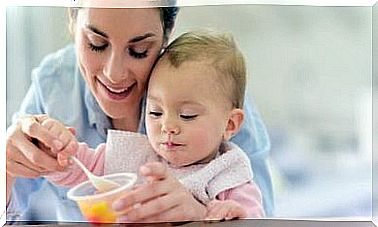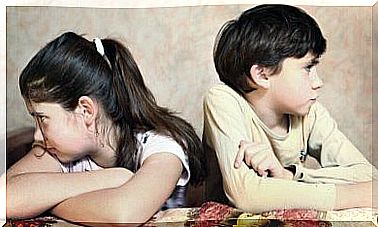Improvisation Theater For Children: Everything You Need To Know
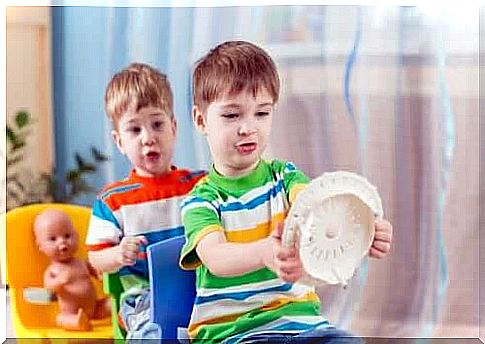
Improvisation theater for children can serve as a powerful tool in education and development. In addition to teaching them about theater and acting, the improvisation techniques they learn can serve as a valuable resource when they use them in daily life.
Acting and improvising in the classroom and elsewhere stimulates children’s creativity. It promotes thinking ability and uses the body as a means of expression.
Improvisation is the core of all artistic creation. With the help of this technology, children can explore a world of possibilities while learning about their surroundings, their classmates and themselves.
Ultimately, improvisational theater means playing a game with specific rules. Through this play, the children get to immerse themselves in emotions, thoughts and reality. To improvise is to focus on “here and now” and as such you can understand it as an exercise in consciousness.
Improvisation theater for children
The main goal of improvisation exercises for children is to teach them to improvise, but there are other goals. In this article, we look at other important goals with each exercise.
It is important to remind children that when improvising, it is important to “let go.” This teaches them to understand that sometimes you have to stop thinking about things and simply let them happen.
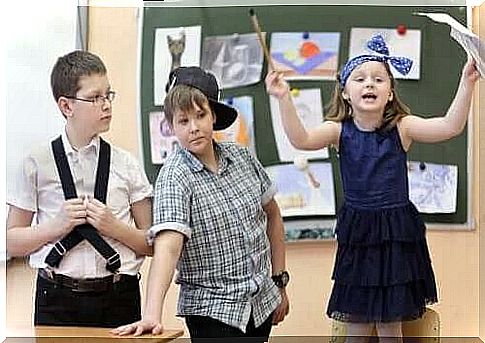
Group improvisation with music
- Number of children: You need at least four children in the group.
- Ages: Four years and up.
- Recommended duration: Five minutes. If there are more children, you need more time.
- Improvisation goal: Develop bodily expression through music. Explore musical rhythms with the body. To be enchanted by the music. Observe others and focus.
Turn on lively music and form a circle with the children. Encourage them to follow your movements first. Start by making simple and repetitive movements with the rhythm of the music and let the children imitate you.
Then the children take turns making a movement (also these to the rhythm of the music) and the others must imitate the movement. Guide the exercise by calling out the name of the child taking the lead.
If they feel blocked, remind them that the important thing is to improvise and go to the music – not to think too much.
Improvisation theater for children: Explore the space
- Number of children: You need at least four or five children in the group.
- Ages: Six years and up.
- Recommended duration: 10 minutes. If there are more children, you need more time.
- Improvisation goals: Pay attention to one’s physical and emotional states. Connect with others. To express one’s own feelings while discovering others.
Instruct the children to walk through the entire stage space with some basic rules. They should try to cover the entire space. They should stay at the same distance from each other, which means that there should not be too large gaps between them, nor should they group too close to each other.
As they walk through the space, you tell them what to do. Here are some guidelines:
- Go in silence, just look at yourself and observe how you feel while being careful not to collide with any of your peers.
- Keep going and start making eye contact with others. Think about how you feel and what arouses our eye contact with others.
- When you hear a pat, greet the closest classmate. Start with a short greeting and each time the greeting becomes more animated.
- Later, also add emotions that the children can play. For example, walking while he or she is happy, sad, angry or scared.
The static scene
- Number of children: You need at least four children in the group.
- Ages: Six years and up.
- Recommended duration: Between 15 and 20 minutes. If there are more children, you need more time.
- Improvisation goal: Work in silence. Create your own characters and a group scene. Learn to observe and go beyond the stage. To connect with others and agree. Work with bodily expression.
Divide the children into groups. If there are more children to be included in the activity, you can form more than two groups.
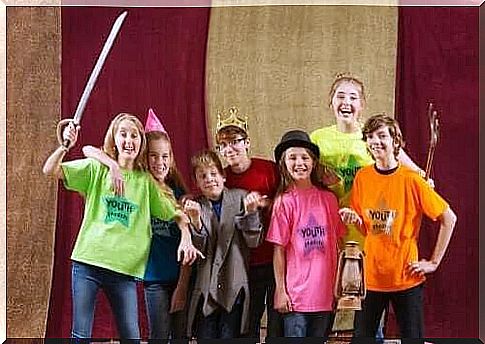
This activity consists of working in groups to create a static scene, a bit like a 3D photo. While a group creates its image, the other children are silent with their backs to them. When the picture is ready, the other children turn and look at it quietly.
To create the static scene, the group must decide who will play which character, the story they want to tell and what action each of them will do in the picture.
After seeing the picture for a while, the other children should raise their hands and make guesses about what they see. They can guess what the characters are, what they do and what happens in the overall scene.
Finally, give the children who form the scene a sign to bring the scene to life by starting to move. They can then explain what happened in the scene and compare what the actors tried to convey with what the spectators thought it looked like.
In summary…
Finally, it is important to remember that in improvisational theater for children, it is important to emphasize mindfulness and the importance of thinking about one’s classmates.
Students should also learn to be as generous with themselves as they are with others. There is no room for condemnation and scorn. Ultimately, the goal is to let them be swept along by these new sensations.

